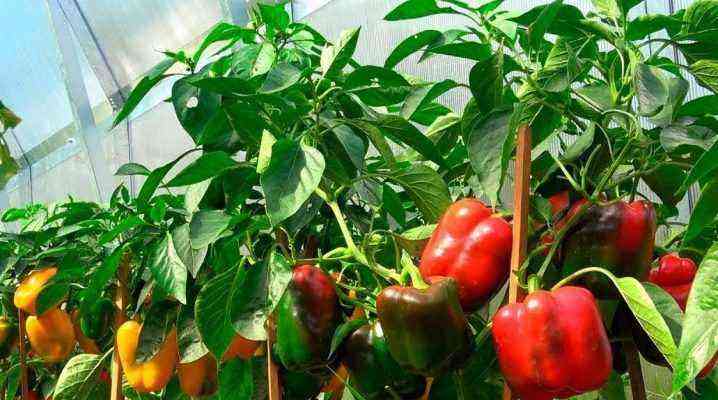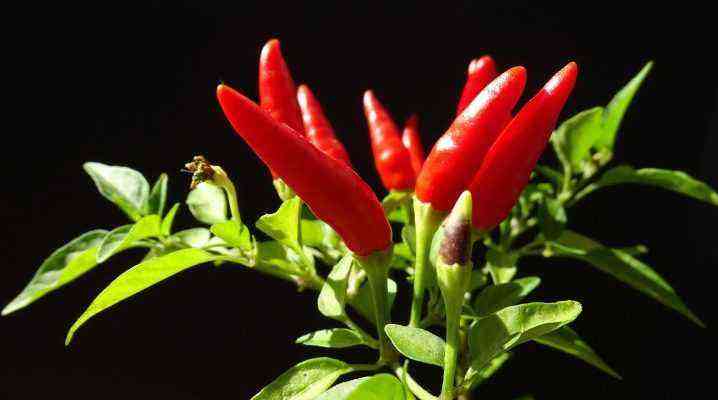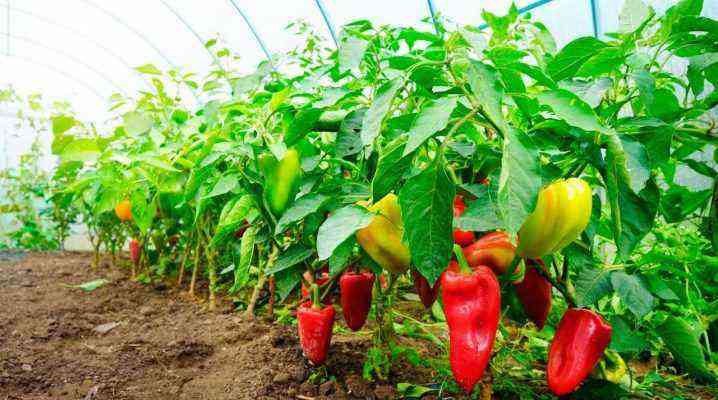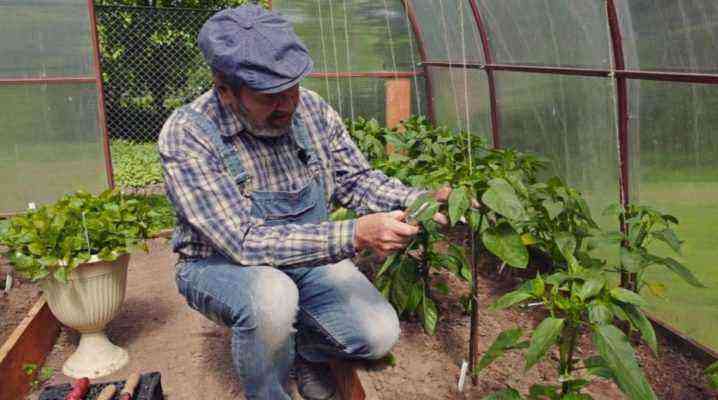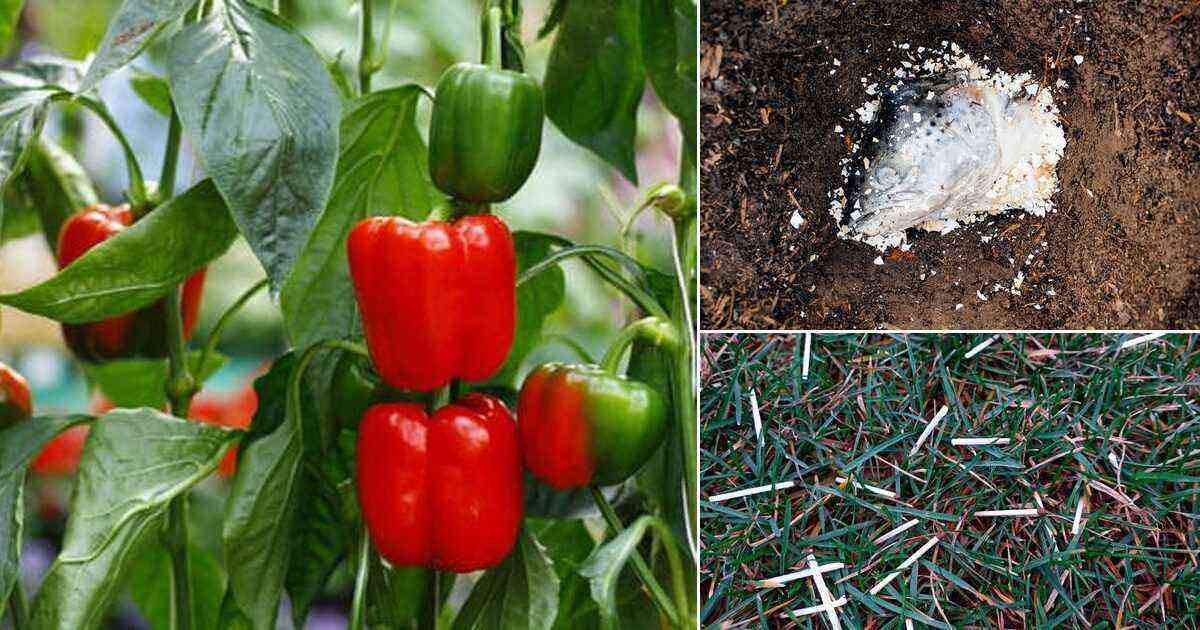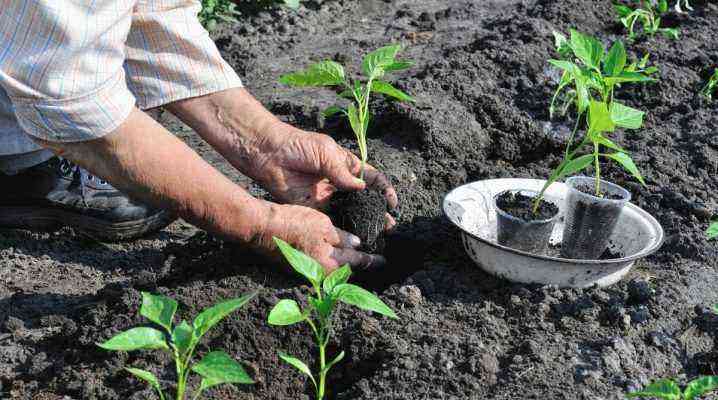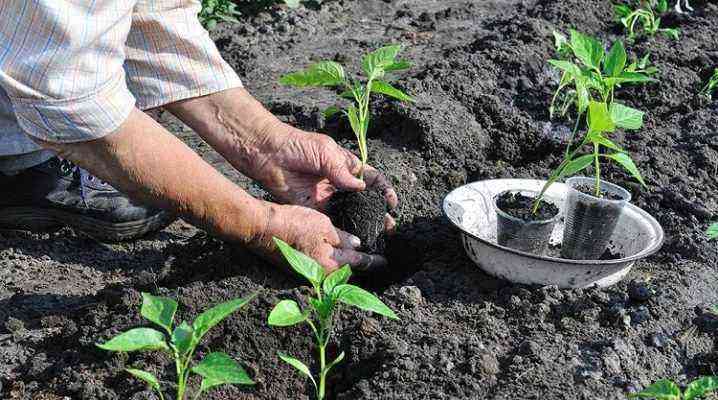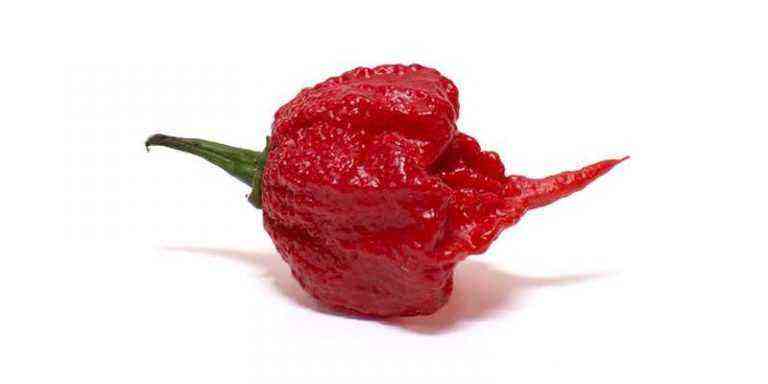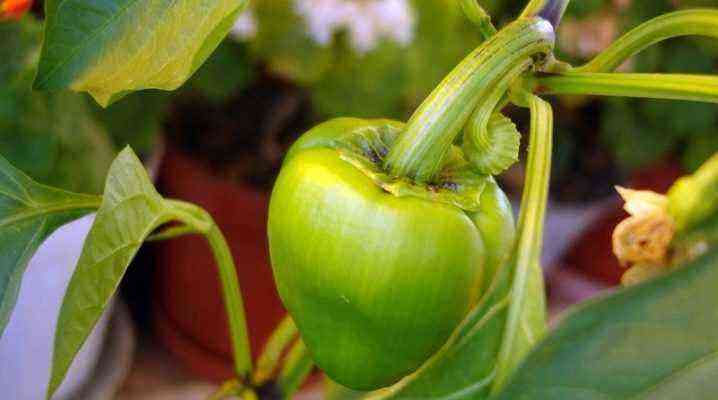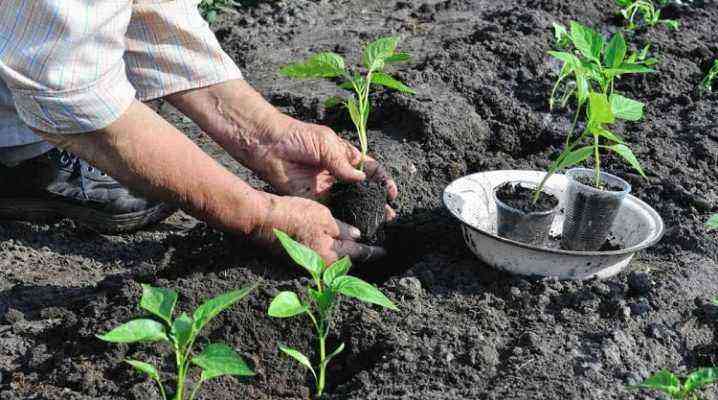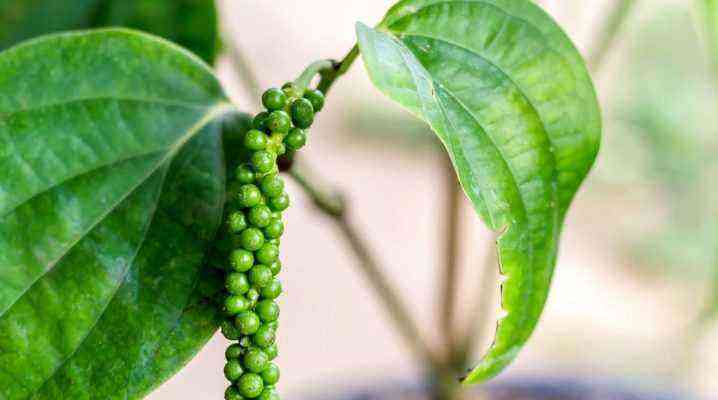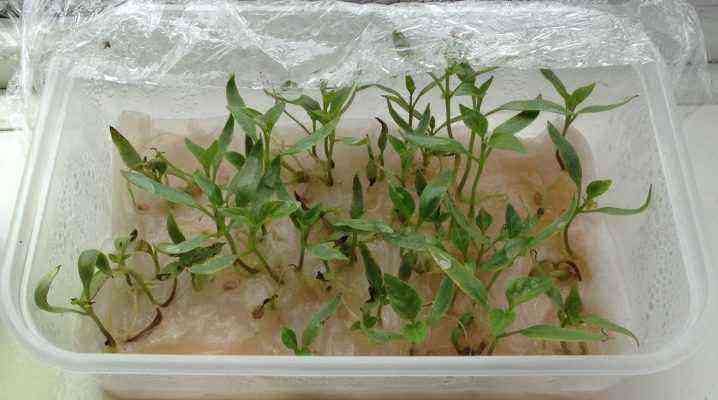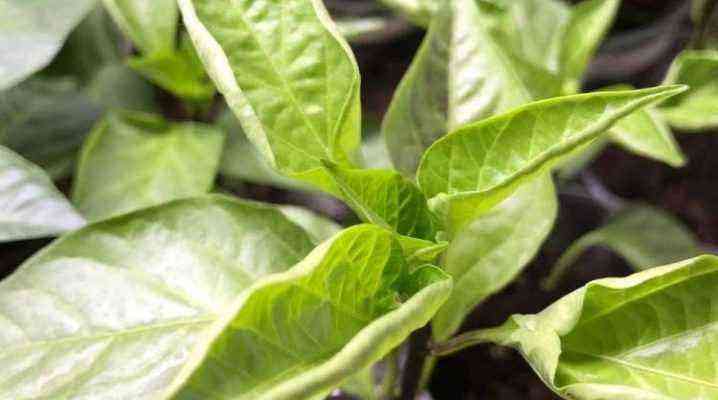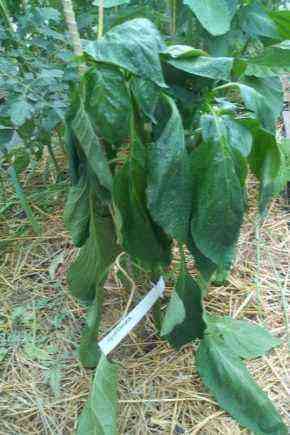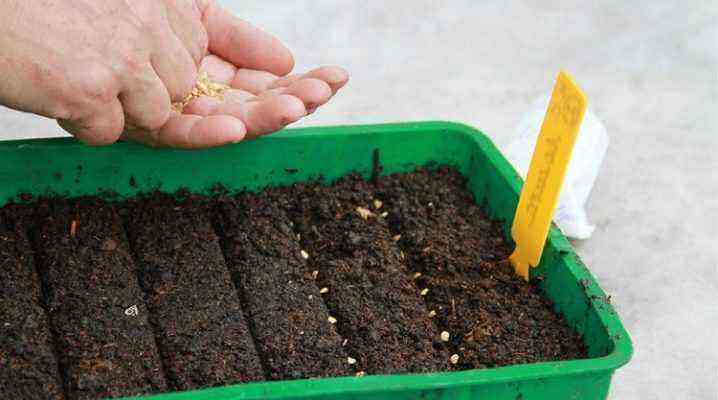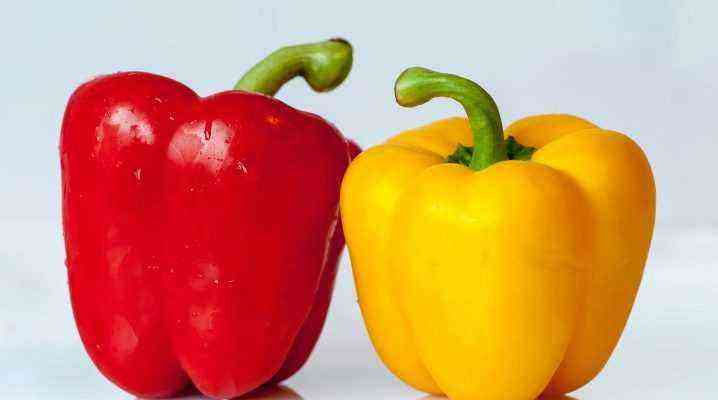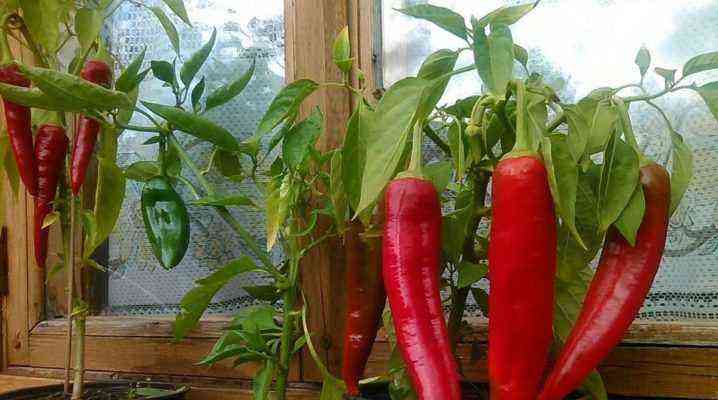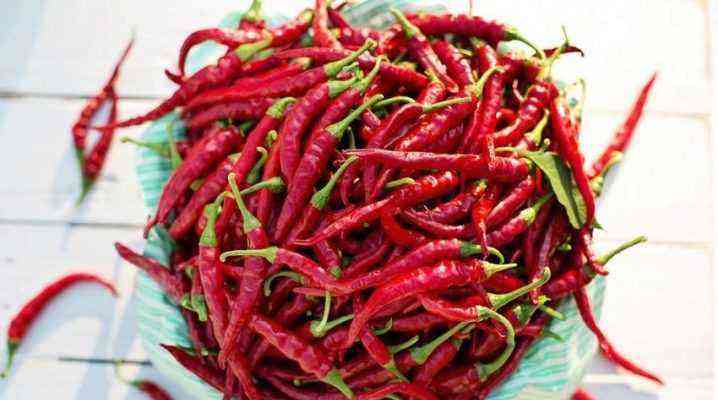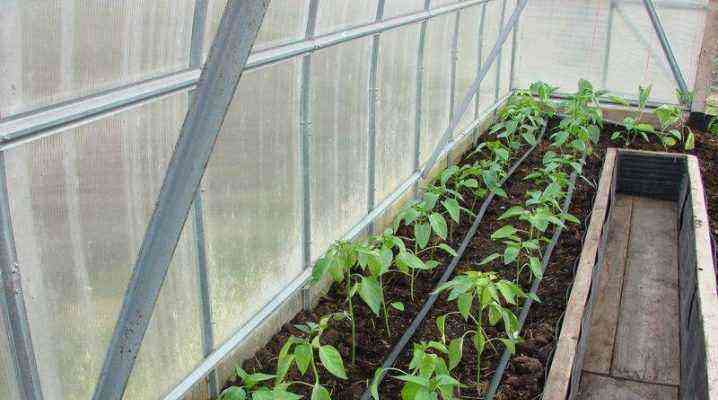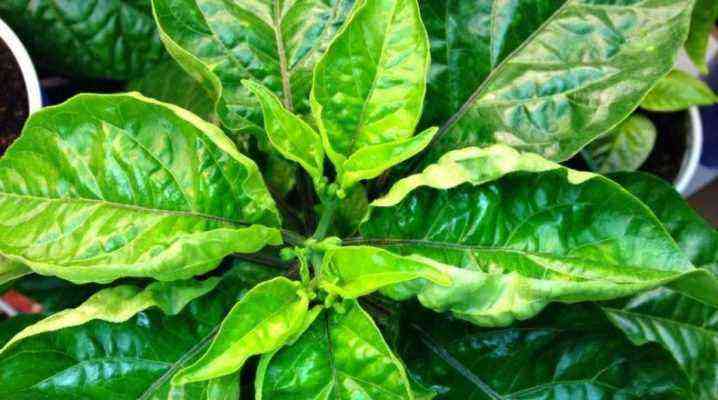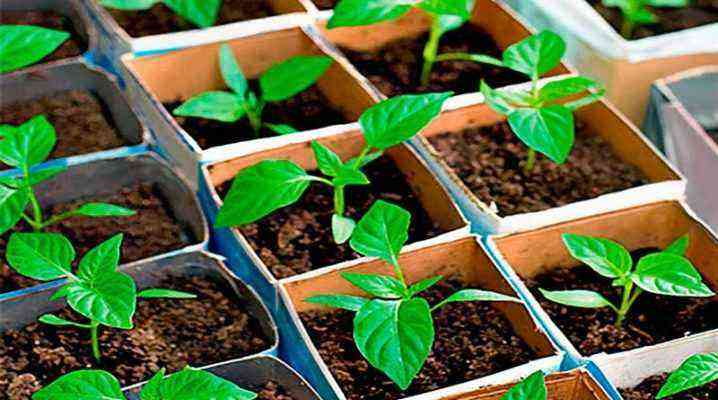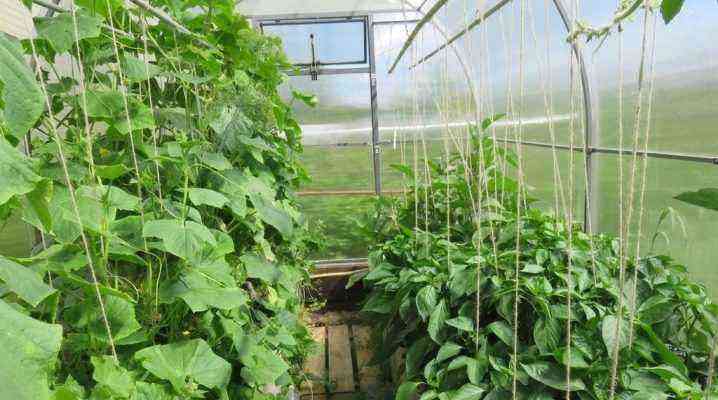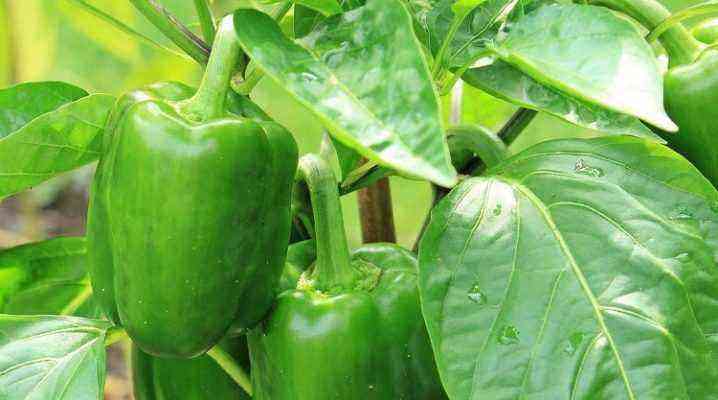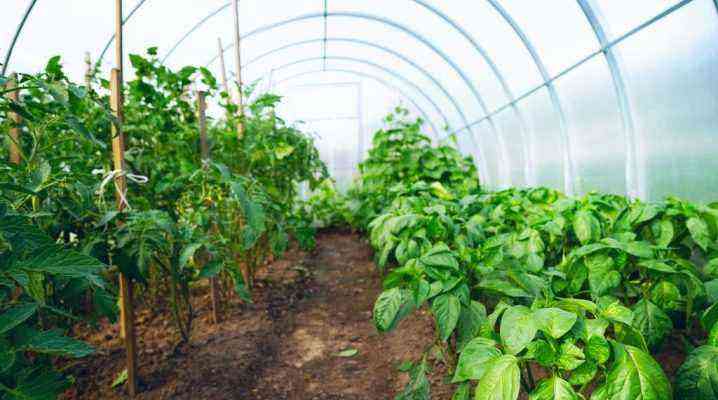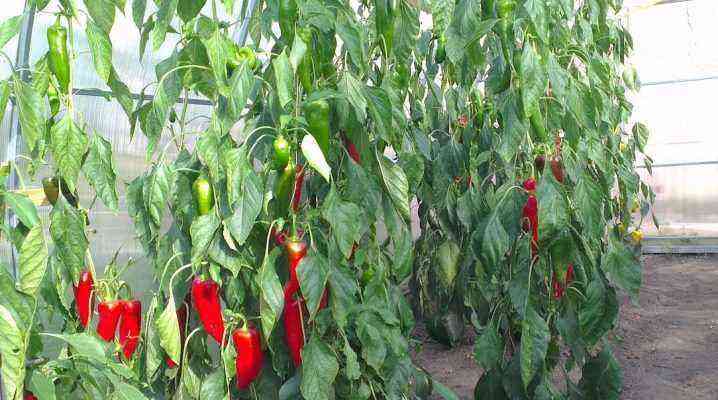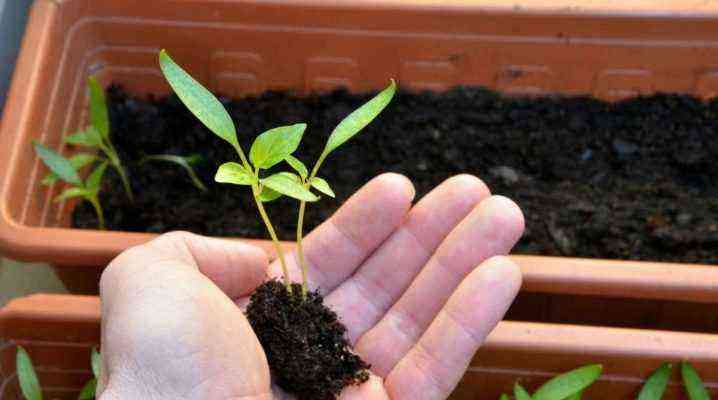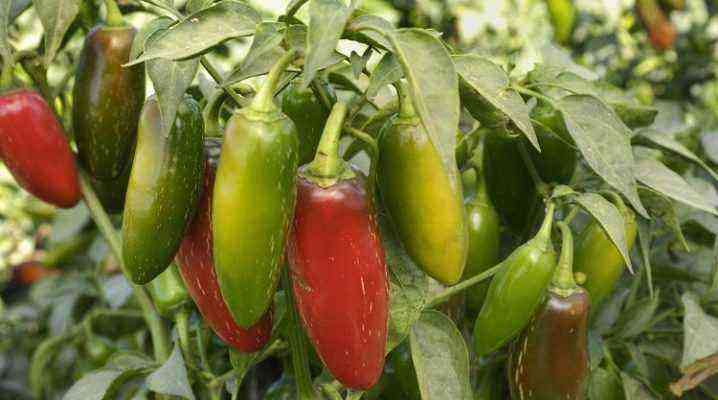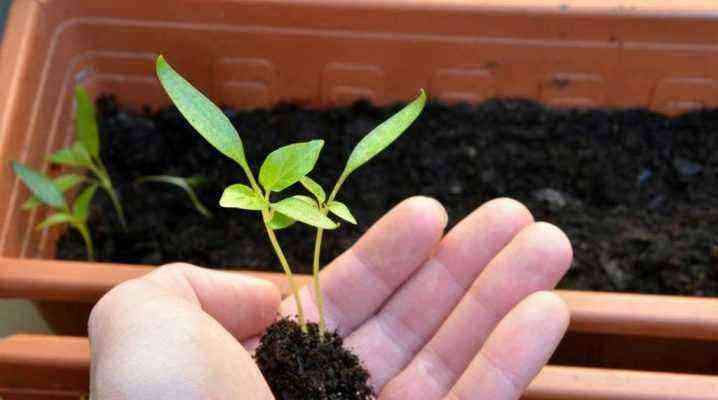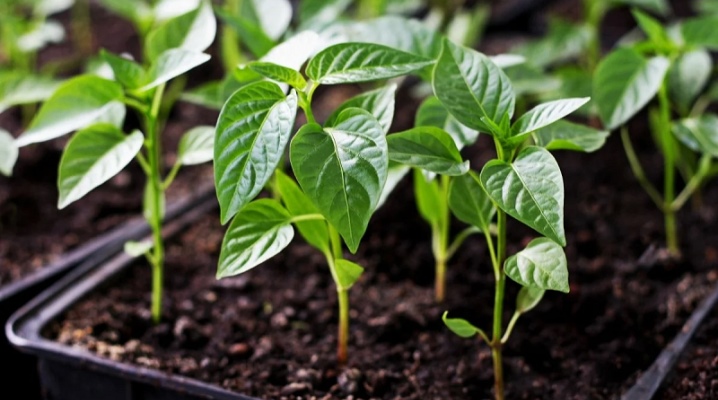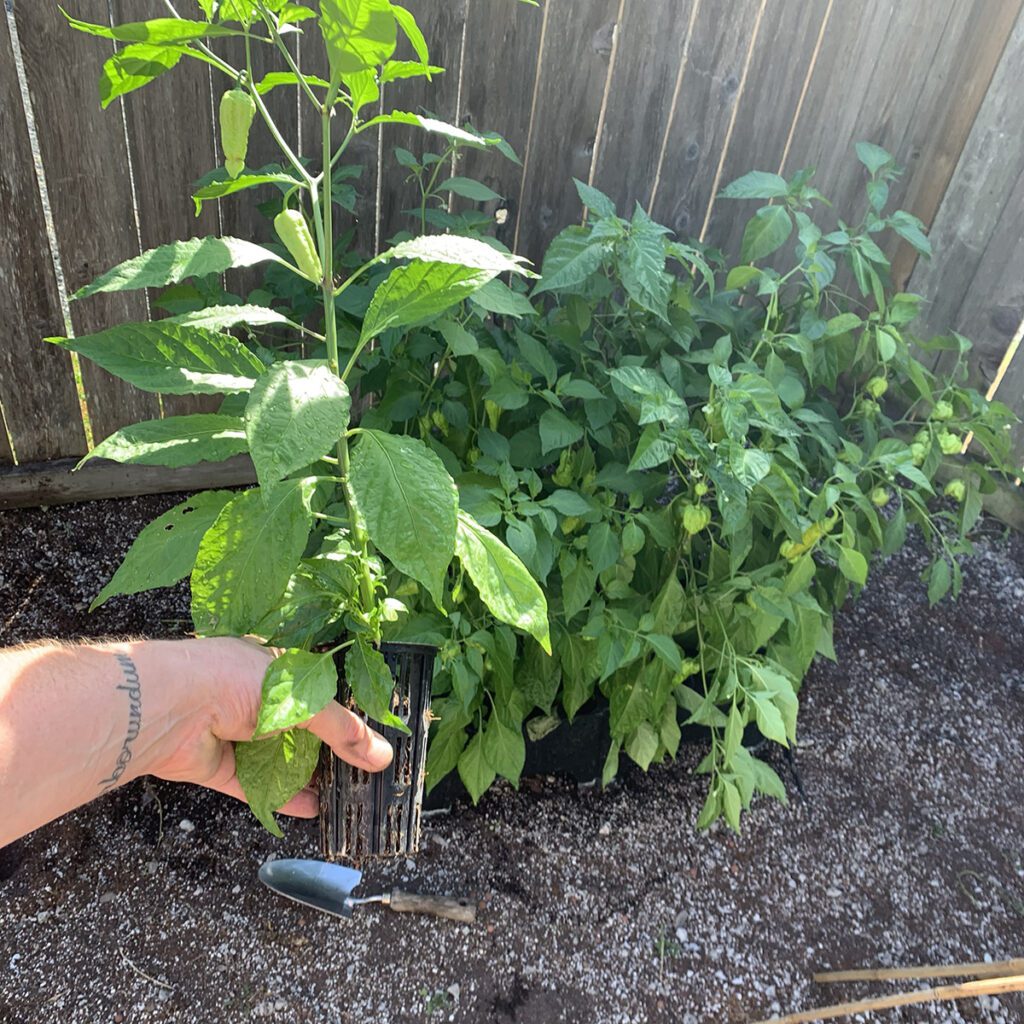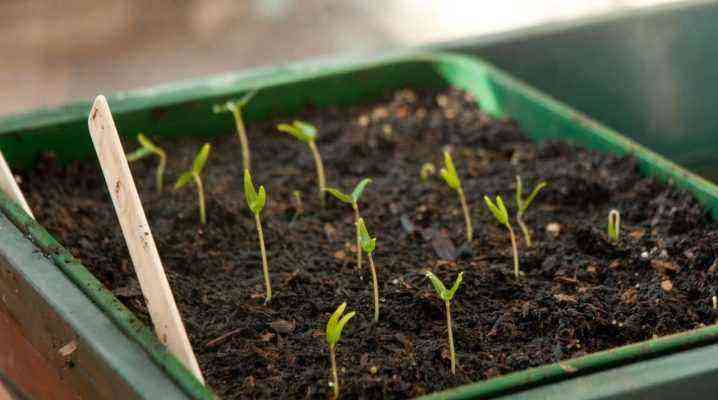
Many people grow peppers in greenhouse conditions. This must be done, observing many important rules. It is possible to achieve a good harvest in a greenhouse if you properly care for the crop. In today’s article, we will learn everything you need to know about planting peppers in a greenhouse.
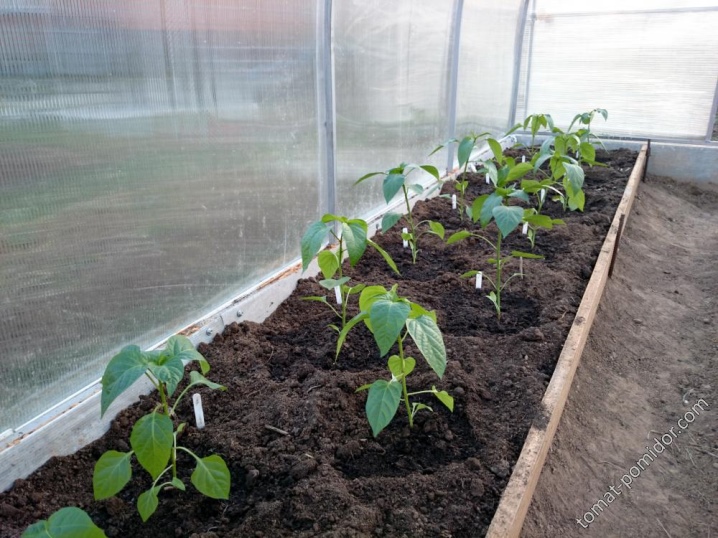
Terms and conditions
Planting peppers in a greenhouse is an important process. It must be held in accordance with many rules that cannot be neglected. The gardener-gardener must necessarily adhere to certain deadlines, as well as provide plants with optimal conditions for planting.
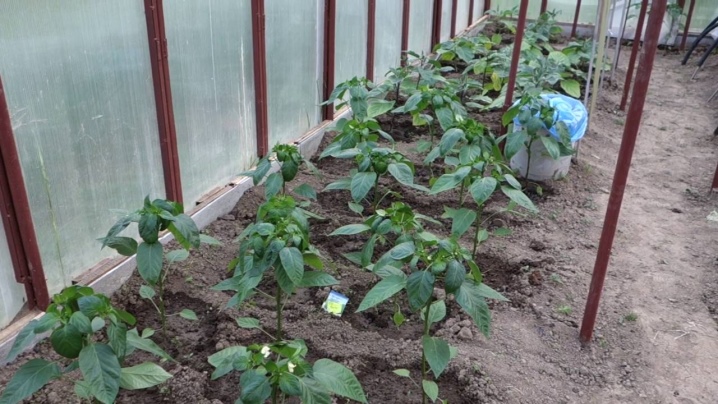
The timing of the transfer of seedlings of peppers may vary. Most often, landing is started in the spring, namely in mid-May. To determine the best time as accurately as possible, you should start from the air temperature. It should not be lower than 10-12 degrees Celsius, but it can reach a higher mark. Under the conditions of the middle zone, similar temperature values are set in early or mid-May. If we are talking about the northern regions (for example, the Urals), then the allowed parameters are set at the very beginning of the summer season.
It is possible to plant pepper seedlings in polycarbonate greenhouses only at the moment when she is 2 months old.
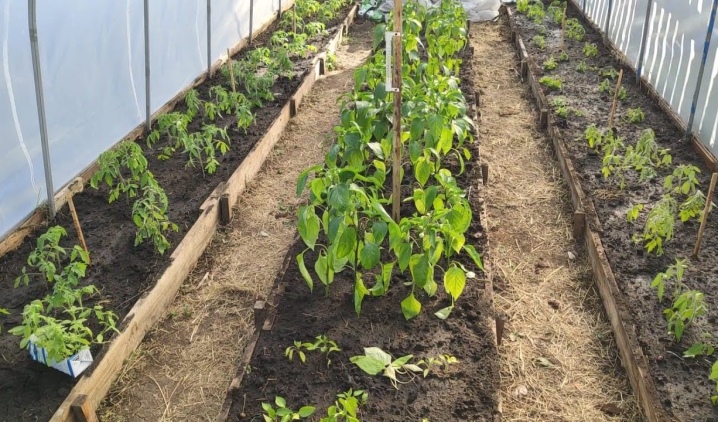
The polycarbonate greenhouse structure, equipped in the yard, creates comfortable conditions for growing pepper seedlings. Ideal parameters are achieved due to very good light transmission, as well as the retention of the necessary heat inside the structure. In order to end up with a rich and healthy harvest, certain temperature indicators should be maintained in the greenhouse.
- The temperature for pepper seedlings inside the greenhouse should be at least +22 degrees Celsius, and on the ground – at least +14 degrees Celsius.
- If the summer resident wants to achieve rapid and rapid growth of seedlings, a temperature of 27-28 degrees Celsius should be maintained in the greenhouse structure.
- Reducing the temperature values to a minimum (about 14-16 degrees Celsius) will not lead to the death of the seedling material, however, it can provoke wilting, as well as a complete cessation of plant growth.
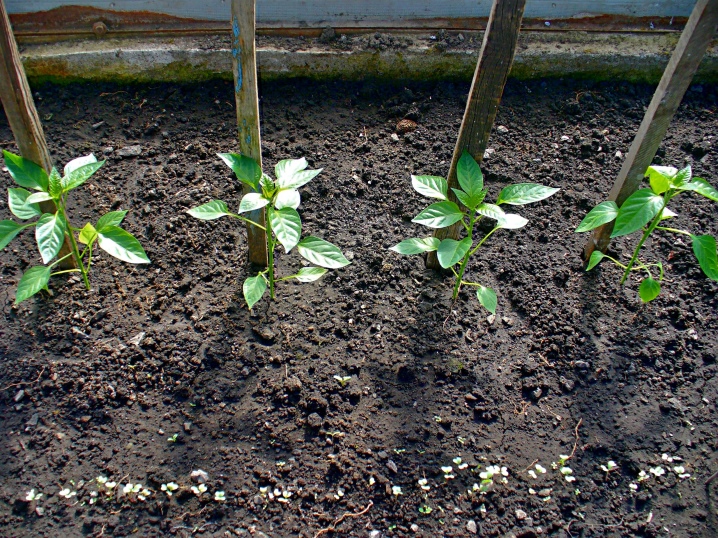
If you take into account favorable days when planting peppers in a greenhouse, provide the plants with all the necessary conditions, then you don’t have to worry about the quality of the crop.
Prepare
To plant peppers in greenhouses, summer residents need to carry out a lot of necessary preparatory work. First of all, competent soil preparation is required in which vegetables will be planted. Soil improvement should be done in advance. The first work is carried out in the fall, and then in the spring. We will find out what manipulations will be necessary for this.
- The soil must be dug up well. At the same time, it needs to be saturated with suitable high-quality top dressings, which peppers love the most. It is imperative to comply with the norms for applying organic fertilizers – 5 kg per 1 sq. m.
- In the period from April to May, the earth is dug up again, fertilizers need to be applied again. It is advisable to add potassium and phosphorus in the amount of 40-50 g per 1 sq. m. Also, humus will be a good solution.
- Before planting pepper seedlings, the soil in the greenhouse must be loosened, dig the necessary holes, and then fill them with liquid. The beds need to be warmed up until the minimum temperature is reached – 15-18 degrees Celsius. The best values will be 23-25 degrees Celsius.

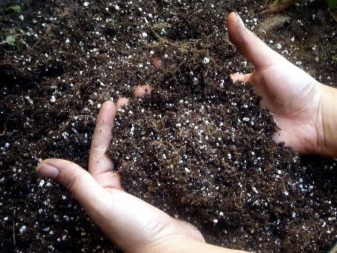
Being engaged in preparatory work, one must not forget to regularly ventilate the premises of the polycarbonate greenhouse. Loosening the earth should be periodic until the plants have time to fully take root. Due to this, the earth is very well saturated with oxygen. This increases the ability to resist various dangerous diseases and infections.
In order for soil fertility to increase, the summer resident can use suitable biological products. Good results can be achieved by Ekomik Harvest and other professional tools.

Live microorganisms and biological preparations provoke intensive decomposition of organic substances in the earth, lead to the accumulation of the necessary nutrients. Thus, the plants in the greenhouse receive all the substances they need.
As soon as the process of preparing the soil in the greenhouse building is completed, the summer resident will need to correctly mark out the beds for future plantings. They do not need to be made too wide – a parameter of 80 cm is enough. Thus, plant care will be as convenient and affordable as possible. At the same time, it is advisable to leave at least 30-40 cm of free space between the beds themselves.
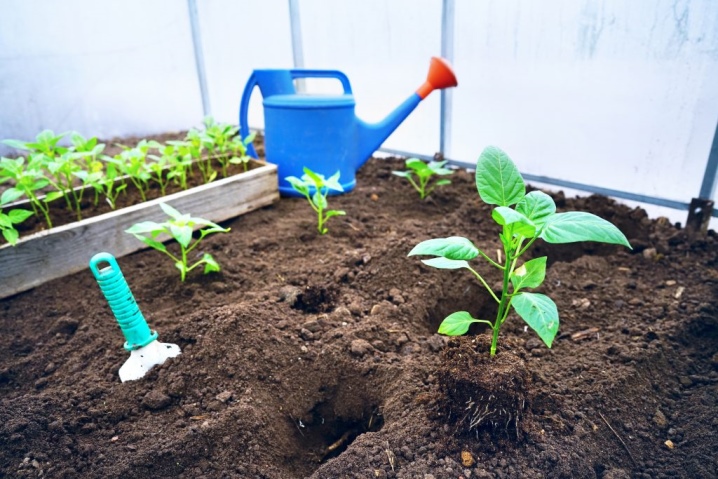
This is necessary so that the plants do not shade or oppress each other.
Schemes
There are several basic schemes for planting peppers. Let’s take a look at the features of each of them.
seedling
This scheme is the most popular and convenient, so most gardeners turn to it. With this scheme, the interval between rows is usually 60-70 cm, and between pepper seedlings – 30-40 cm. The taller the plant is, the more free space it will need. As a result, it turns out that from 1 to 3 bushes can comfortably fit on 5 square meter.
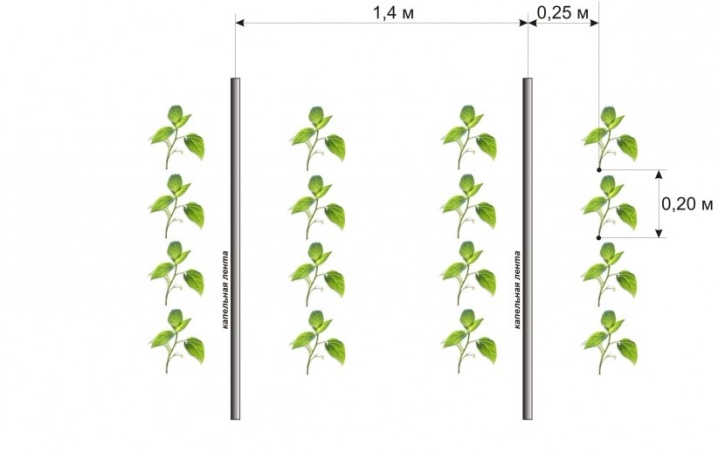
With this scheme, the hole must be dug so deep that pepper seedlings can fit into it along with an earthen clod. Before planting, 1 liter of water is poured into the wells, waiting for it to be absorbed. Only after that, the finished bush can be placed in such a recess.
Seedlingless
In accordance with this scheme, only pepper seeds are sent to the prepared soil, and not ready-made seedlings. If you use this method, then first of all, the root system will begin to develop in plants. The seed material is pre-soaked in a liquid mixed with top dressing. Nitrogen, peat, ash are also placed in the hole. If a seedless scheme is used, then the summer resident will need to monitor the density and depth of sowing. The first shoots can be seen already after 14-16 days.

The bushy
Another popular technique for planting peppers in a greenhouse. This method involves transplanting two bushes into the hole at once. For greenhouse facilities and cold climates, such a scheme is not suitable. Under such conditions, plantings can become infected with dangerous fungi from each other, and they do not bring a very good harvest.

How to plant?
For transplanting seedlings into a greenhouse, it is necessary to choose cloudy days. It is best to carry out all work in the morning or in the evening, when the most comfortable temperature is kept inside the greenhouse. In this case, the plants will not be influenced by the direct rays of the scorching sun. Before planting the seedlings, it is watered so that it is easier to pull the plants out of the cups / pots.
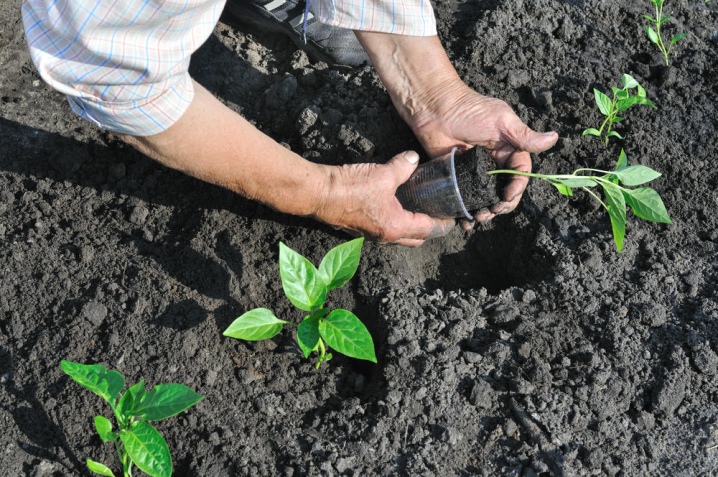
Let’s consider step by step how the planting of pepper seedlings in the greenhouse should be carried out correctly.
- First, on the prepared beds, it is necessary to make suitable holes, while indenting in accordance with the chosen scheme. The indicators of the width and depth of the holes should be greater than the earthen clod along with the rhizome of the pepper.
- At the next stage, the first mandatory watering of the completed hole is carried out.
- If during the preparation of the soil the summer resident did not apply fertilizers, then they can be added to the wells and in the course of the direct planting of Bulgarian or other pepper. There will be enough nitrogen, phosphorus, potassium supplements in the amount of 1-2 tbsp. l. or 2-3 handfuls of humus, 1 handful of ash.
- Next, the pepper is placed in the hole so that the depth reaches the root collar of the plant. It is not necessary to lower the seedlings even lower.
- After all these steps, the summer resident needs to sprinkle the hole with earth, compact it a little. Next, watering is done. Approximately 1 liter of liquid should be used per well.
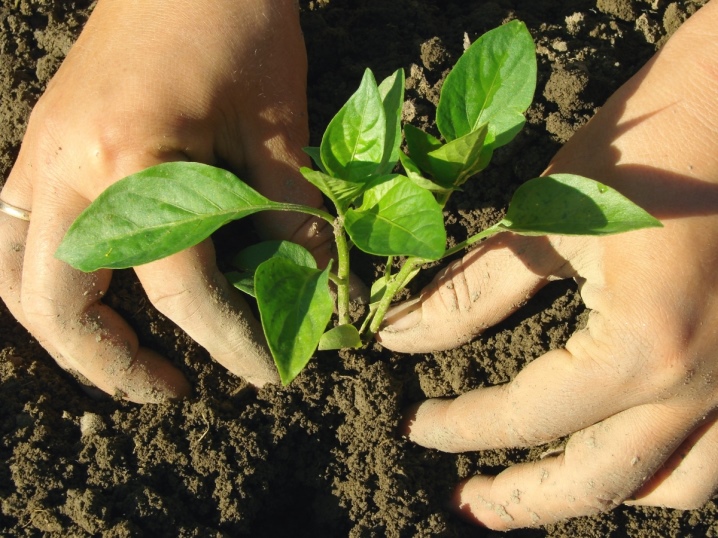
The surface of the soil near the planted pepper bushes must be covered with a special mulching material. It can be straw chaff or hay dust.
Aftercare
After planting peppers in the greenhouse, they need to be properly cared for. Let’s find out what it is.
Watering
To achieve a good yield of peppers, you need to know exactly how to properly water them in greenhouse conditions. The following recommendations must be followed.
- Planted bushes need to be watered under the spine.
- Rain irrigation should not be used, as this leads to the sterilization of seedlings.
- During flowering periods, excessive drying of the soil layer should not be allowed. Because of this, the buds will soon wither, and the fruits will ripen too thin, small.
- The best option would be drip irrigation.
- For one pepper bush, the volume of water will need to be increased (from 1 to 2 liters) in the course of growth.
- You can not water the pepper with cold water. The liquid must be heated to a temperature that is comfortable for plants – from 22 to 24 degrees Celsius.
- Watering pepper seedlings in the greenhouse should be done in the morning.
- If cool days have set in the yard, it is necessary to water the pepper 2 times a week, and in hot weather – 3-4 times.
- A special mineral-type top dressing should be added to the irrigation liquid about 1-2 times a month. Due to such procedures, the immunity of plants will increase, their productivity will increase.
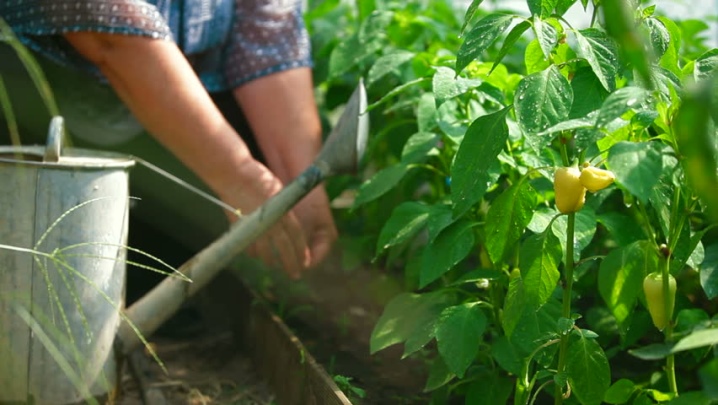
Additional fertilizing
The key to a rich and healthy harvest is the addition of high-quality and suitable top dressings. Many summer residents are asking a logical question, what is the best way to feed greenhouse pepper after it is transplanted, as well as during active growth. There are several main stages of applying fertilizer components.
- After 3-4 weeks after moving the seedlings to the greenhouse. At this point, it is best to use 5 g of superphosphate mixed with 10 liters of water and 10 g of urea. It is required to pour 1 liter of solution under each pepper bush.
- During flowering plantings, you can use a mixture of superphosphate (from 9 to 10 g), as well as potassium sulfate (3 g) with water (10 l). 1 liter of the resulting solution should be fertilized with each of the pepper bushes in the greenhouse.
- Proper feeding will be needed at the time of harvesting peppers. To do this, mix phosphorus (1 tsp) with potassium (1 tsp) and water (10 l). Under each bush, it is required to pour 1 liter of the finished composition.
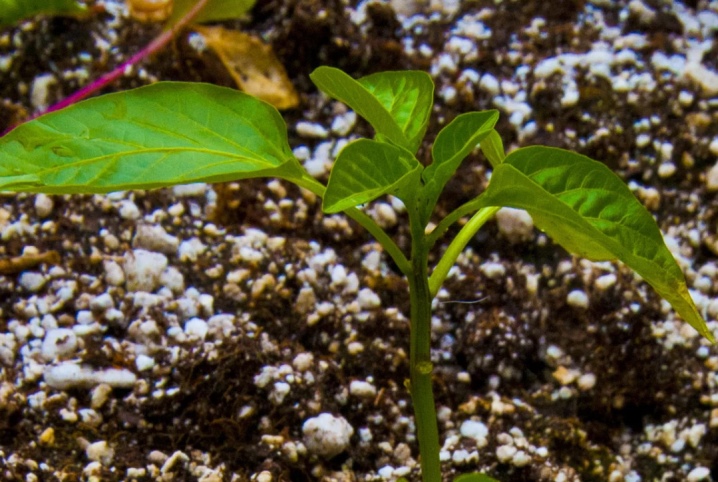
The summer resident must remember that top dressing requires an exceptionally competent approach. To properly fertilize peppers, only approved compounds should be used. You can not resort to the introduction of chicken manure or cattle manure.
Such fertilizers easily burn the rhizomes of plants, spoil their metabolism. This leads to a decrease in yield, excessive growth of leaves.
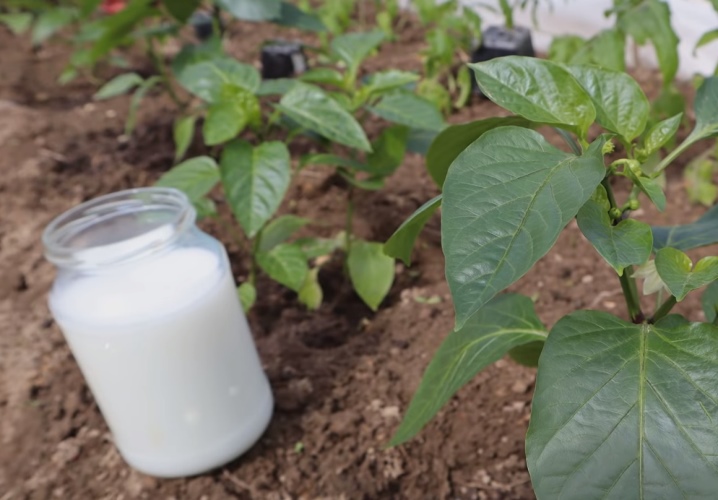
Possible problems
After planting seedlings, the summer resident may face a number of serious problems that require an early solution. Such troubles often make themselves felt due to the most stressful transplant process. In addition, people often accidentally damage the roots.

Let’s look at the most common problems that can occur when transplanting peppers into a greenhouse.
- It happens that after transplantation, the cotyledons turned yellow. This is a sure sign that the seedlings need more plentiful nutrition. To solve this problem, you can feed the plantings with the Ideal universal fertilizer product, as well as intensify watering.
- If the stems of transplanted plants suddenly become coarser, then this may indicate the negative impact of temperature changes, as well as errors in watering and fertilizing. “Lumbering” of the stems is a very bad sign, as it causes them to crack. In addition, on such a basis, nutrients and moisture pass very poorly, which can also affect productivity.
- It must be remembered that greenhouse peppers can be seriously affected by root rot. That is why it is so important to dive the planted vegetable correctly. You can not do this at the stage of two developed leaves.
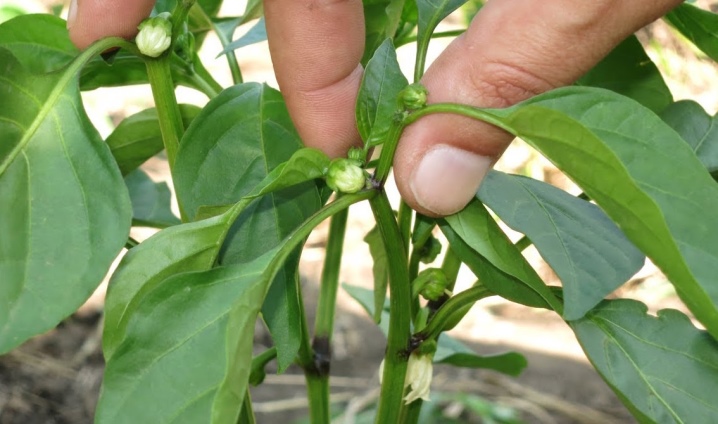
You should always keep under control the condition of the peppers in the greenhouse. If the gardener notices in time that the vegetable bushes are darkening, growing poorly or withering, then he will be able to resort to effective actions in time.
Compatibility with other cultures
You need to know next to which crops you can and cannot plant peppers in a greenhouse.
- You can not plant sweet Bulgarian pepper next to sharp species (for example, chili), since seedlings tend to pollinate.
- It is not allowed to plant peppers and cucumbers in the same greenhouse. Cucumbers do not need regular ventilation, but peppers without fresh air can be bad. Cucumbers need heat, and peppers need a constant moderate air temperature.
- Peppers and tomatoes do not get along well. These cultures need different conditions of detention. The former require more moisture, while the latter can die from an excess of fluid.

Useful Tips
Consider some useful tips on how to properly plant peppers in a greenhouse.
- After planting seedlings in the greenhouse, several large eggplants filled with water can be placed next to it. During the day, the liquid will warm up, and at night it will give the plants the necessary heat. Thus, it will be possible to mitigate sharp jumps in temperature values.
- In order for the pepper to show good fruiting, it is very important to form a bush correctly. Shoots should be pinched. It is important to remember that undersized varieties do not need such manipulations.
- In most cases, pepper seed packages indicate the optimal planting pattern. It is worth listening to the manufacturer’s recommendations.
- It is not recommended to grow peppers in the same place for several years in a row. It is necessary to maintain an interval of at least 3 years.
- Seedlings should not be placed too closely on the beds. They should be as comfortable as possible.
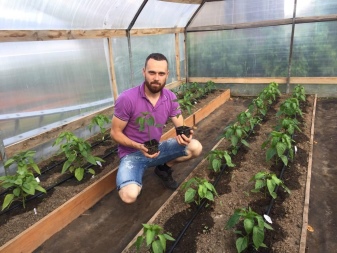
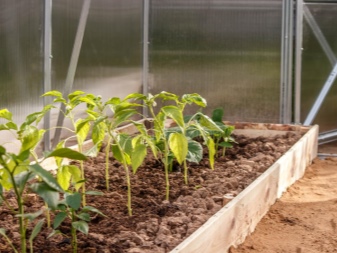
If there is not enough space for the root system, then a good harvest will not be achieved.
